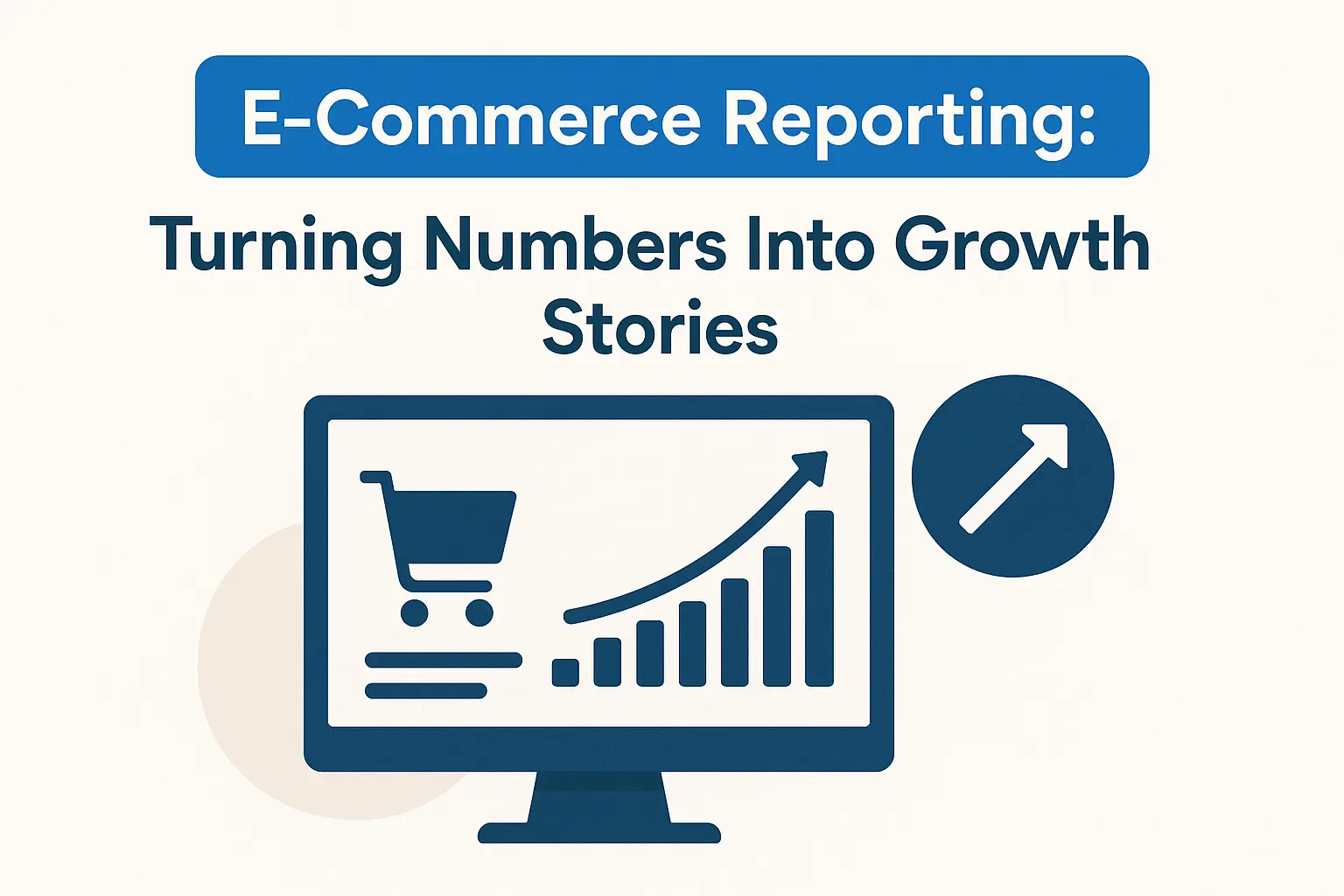- Perfality
- October 2, 2025
- 11:00 am
- Read Time: 5 mintues
Every seller has piles of data. The problem? Numbers on a spreadsheet don’t magically grow sales. What matters is how you read them, connect the dots, and act. That’s where custom reporting proves its worth. Unlike heavy tools like Power BI — which often leave teams staring at endless charts — effective e-commerce sales reports strip away the noise and show the signals that actually drive growth.
Why Reporting Isn’t Optional Anymore
E-commerce isn’t just “list and sell.” Every shopper click, cart, or bounce leaves a trail. If you’re not tracking it, you’re flying blind. Think about it: would you run ads without knowing if they’re profitable? Or carry stock without spotting low-inventory alerts?
That’s the role of an e commerce analysis report. It doesn’t just look back at sales once a month. It’s built to match your rhythm — daily, weekly, bi-weekly, monthly, even quarterly.
- Daily: catch traffic spikes or ad overspend the moment they happen.
- Weekly: spot conversion leaks before they snowball.
- Bi-weekly: track promotions or campaigns without waiting a full month.
- Monthly: see patterns in customer behavior or revenue shifts.
- Quarterly: step back, check the bigger story, and plan the next move.
That variety is what makes effective e-commerce sales reports valuable: they flex around your business, not the other way around.
Beyond Power BI Dashboards
Power BI has its place. It’s a great tool for slicing massive data sets. But if you’ve used it, you know the drill — it looks impressive on screen, but often feels clunky when you just want quick, business-ready answers.
What most brands really need is an e commerce analysis report that tackles questions like:
- Which product categories are draining margin?
- Did that weekend promotion actually make money, or just hand out discounts?
- Are SKUs about to run out, putting you at risk of lost sales?
- How are Reviews & Ratings shaping conversion over time?
That’s where effective e-commerce sales reports stand apart. They don’t just visualize; they help you decide what to do next, without digging through ten dashboards.
What a Strong Report Covers
An e commerce analysis report worth reading doesn’t just give you sales totals. It zooms in on the levers that drive profit:
- Sales by product and category
- Ad spend vs. returns (across daily to quarterly timeframes)
- Inventory health and stock signals
- Buyer behavior — repeat customers, cart abandonments, browsing drops
- The impact of coupons, deals, or discounts
Layer all that into effective e-commerce sales reports, and suddenly you’re not just measuring performance. You’re seeing what to scale, what to pause, and where money is leaking.
Why Brands Work With Perfality
At Perfality, we see the same story again and again: brands drowning in data, starving for clarity. That’s why we design effective e-commerce sales reports that go beyond cookie-cutter dashboards.
Our reports combine Content Monitoring, ad insights, Reviews & Ratings, Stock Signals, and Promotions & Deals into a single e commerce analysis report. It’s clear, it’s practical, and — most importantly — it’s built around the timelines that matter to you: daily, weekly, bi-weekly, monthly, or quarterly.
The Edge Smarter Reporting Creates
E-commerce moves too fast to wait for monthly recaps or rely on gut feelings. Brands that use effective e-commerce sales reports don’t just react; they stay ahead. They catch risks before they explode, double down on what’s working, and cut off wasted spend.
With Perfality, your e commerce analysis report isn’t a file you ignore after skimming. It’s the tool that keeps your team focused on growth, not guessing.
Takeaway
Data on its own doesn’t win. Actionable decisions do. And that’s exactly what custom reporting delivers. Instead of forcing your business into rigid platforms like Power BI, effective e-commerce sales reports give you insights that follow your pace — whether daily, weekly, bi-weekly, monthly, or quarterly.
Perfality helps brands turn those reports into growth engines. Because at the end of the day, your numbers should be working for you, not the other way around.






